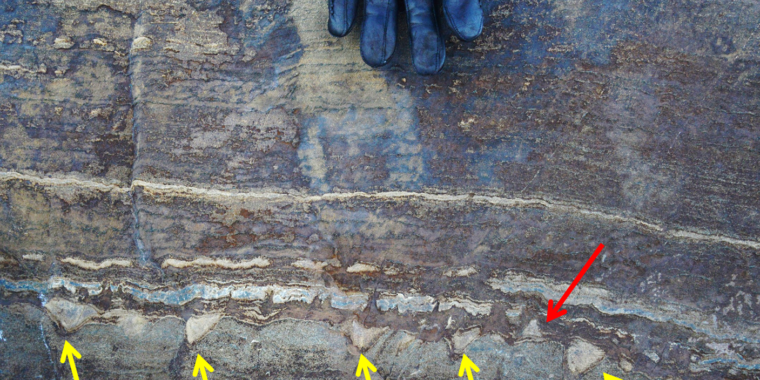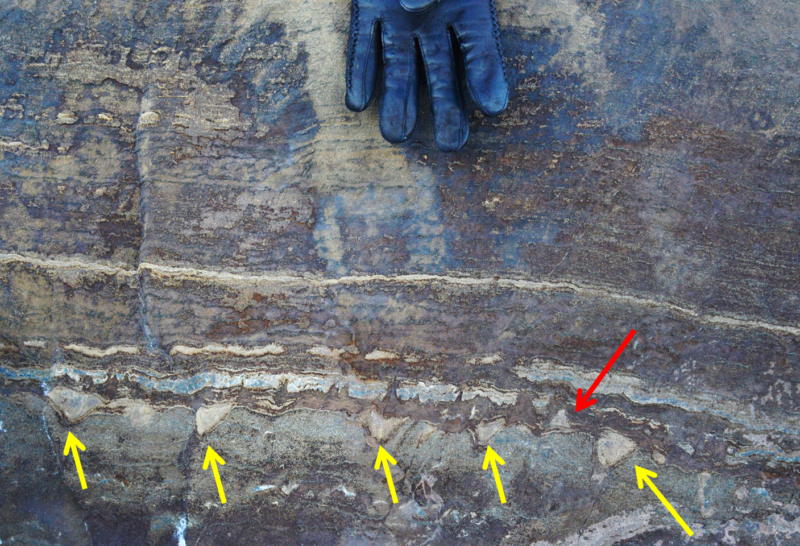
[ad_1]

Few things in science seem to be as controversial as claims to the oldest evidence of life on Earth. As researchers strive to push life’s origins back further into the history of the early Earth, the evidence they have is never completely unambiguous. (If you were over three billion years old, you wouldn’t look so great, either.) Other scientists inevitably question any new evidence, and arguments ensue.
Microbes in Greenland?
Two years ago, a group working in the ancient rocks of Greenland stumbled on some tantalizing cone-shaped distortions of rock layers. Based on several lines of evidence, the researchers concluded that they had found stromatolites, which are layered mounds built by communities of microbes in shallow water. Modern stromatolites are mainly known from Australia’s Shark Bay, but they were much more common when microbes ruled the Earth so are therefore one of the most obvious relics of life in the rock record. The Greenland find would push the age of the oldest-known stromatolite from about 3.45 billion years to 3.7 billion years.
But other researchers wanted to see these Greenland rocks for themselves. And in a newly published study led by Abigail Allwood, she and her team explain why they aren’t buying it.
Their first observation is the simplest—there’s a problem with the shape of the purported stromatolites. The original team worked with the face of the rock outcrop, but the new group managed to saw out a block of rock for a three-dimensional view. What looked like a cone from the front turned out to be more ridge-shaped—like thinking you’ve spotted a square chocolate and finding it’s actually one end of a long candy bar (except not quite so joy-inducing). What’s more, Allwood’s group found some that looked like they were upside down.
Stromatolites form round cones, domes, or pillars. But they don’t form asymmetric bumps that stretch out in one direction. You would expect a shape like that when tectonic forces squeeze a rock layer horizontally, wrinkling it up. And given that these ancient rocks have been through a lot of tectonic abuse since they were fresh-faced sediments, the team thinks this explanation fits all the data.
Chemical clues
Like the original group, this team used chemistry to build on the visual observations. The initial study found some evidence that the chemistry was different inside and outside the purported stromatolites, supporting the group’s interpretation that living things on the seafloor built them.
Allwood and her team tried to zoom in, using a high-resolution X-ray instrument to see exactly where the elements of interest were located. They could not find the fine layering you expect in a stromatolite. Instead, they saw the chemical signs of high-pressure metamorphism, where hot fluids can interact with different minerals and swap stuff around a bit. Critically, they disagree that the rock contains the chemical signature of seafloor carbonate mud—which was a strong indicator that this rock represents a habitat stromatolites would love. The researchers think the carbonate moved in long after the sediment had turned to rock, during that chemical-swapping metamorphic stage.
In short, the researchers find problems with the shape of the bumps, the absence of fine layering inside them, and unconvincing chemical signatures. Rather than leaning toward microbial stromatolites, they think metamorphic squeezing and heating of this 3.7 billion-year-old rock fits the evidence better.
The researchers that first discovered this outcrop may not agree with each of these interpretations, but they’ll have to incorporate the new data and re-evaluate. This back-and-forth highlights how difficult it is to find evidence of life in rocks this old. The rocks have been through so much, including things that can leave fingerprints obnoxiously close to those that point to life. The new study describes this as a “cautionary tale” for the search for evidence of life on Mars, too. We could find a tantalizing clue only to realize we can’t quite rule out less-exciting alternative explanations.
Nature, 2018. DOI: 10.1038/s41586-018-0610-4 (About DOIs).
Source link